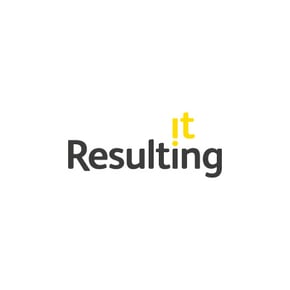
When it comes to SI selection and going to market, writing a good RFP is critical. Treat it like the technical bake during bread week on bake-off and you won’t go far wrong. A list of ingredients that when combined together creates a beautiful plaited sourdough that SIs can’t wait to get a slice of.
I won’t apologize for the analogy I’m using, it’s a good one and it makes sense. There are certain things you need to include in order to ensure that your RFP rises to the top of an SIs priority list and doesn’t end up with a soggy bottom (I promise it won’t be like this throughout).
So let’s get into what you need to make your RFP better than the rest, and get SIs interested in what you’re looking to achieve with your ERP selection.
1. Who are you?
Think of this like being the Star Baker during bread week. You’ve got to really stand out from the crowd and showcase your talents as an organization. So here’s a list of what you should consider including when you’re introducing your showstopping organization.
Organizational culture and values
What makes you tick? What do try to instil into the everyday culture of your organization? What are the values you stand by? Make sure you clearly outline how you work and what matters to you and your business people.
It’s important that whichever SI you choose also understands and can be a great representative of your culture and values.
SAP strategy and vision
What’s the plan here? Are you trying to change the world or just looking to make life easy?
Outline your strategy and vision from the offset, the ups and downs included. This gives the SI better insight into the work they’ll have to undertake and what you need from them from the beginning.
Your rationale for change
What’s driving the change? Why now? What’s changed or what do you want to change?
If you can’t give the SI a clear rationale for why you’re committing to S/4HANA change, then they’re just not going to be that interested in you. Sad, but true.
You can’t change just "because". You have to have a real rationale and business-case as to why it’s important.
The criteria for success
You must have an idea of what a success looks like to your business, so don’t be shy, tell us.
Knowing what you're trying to bake and having a good recipe is key to success in the bake-off tent.
In the same way, knowing what you want from SAP and following a proven approach to get there will massively increase your chance of success.
"Maybe" knowing what ingredients you need and "maybe" knowing how long to bake it for will land you with a soggy bottom and far away from a Paul Hollywood handshake.
Benefits and value realization for S/4HANA
Similar to your rationale, you’re going to have to outline what the benefit and value of change is. Look at your strategy and your business-case, it’s easy to find value when you know why change is important.
2. What are you using?
You can’t bake a cake without an oven, so there’s no use hoping the washing machine can help.
Start by auditing and outlining what your current Technology and Processes are.
You’re not only opening your eyes to what you have available, but you’re giving the SI good insight into what they have to work with.
Current landscape vs. future landscape
As important as it is to know what you’ve got, it’s equally important to what you want it to look like in the future.
Whichever SI you choose needs to know what they’re working with and what you’re expecting them to help you achieve, whether that’s software or hardware.
What are your SAP pain points?
This is your opportunity to really go in and explain what problems you’re facing and why they’re a problem.
Once the SI knows your pain points, they’ve got the ability to find and fix these during your implementation.
If the SI knows this, then they can start to showcase their skills and knowledge in their response, coming up with solutions and resolving your pain points going forward.
Into the known unknowns
Whether it's Tech or Processes, there are going to be certain things that you know you need to solve, but you’re not entirely sure how.
If you explain your “known unknowns” from the outset, your SI can work through these and give you a clear indication of what will need to be undertaken.
But, it’s okay to not have all the answers. Utilize your chosen SIs expertise to help you solve the things you don’t know.
They love a challenge so make sure to give them one.
Your S/4HANA must-haves
So this is less of a list of must-haves and more a list of signature requirements (but that just doesn’t have the same pizazz).
You need to clearly state what processes and functionality you most definitely need and can’t live without so that your chosen SI doesn’t overlook them during your implementation.
Show me what you got
It's definitely worth assessing where the SI can innovate and share their ideas.
Whilst your RFP should be definitive and informative, it’s a good idea to let the SI show you what they’ve got. It could make things easier and drive better outcomes in the long term - they are the experts after all.
3. How are you going to get there?
So now you’ve got all of your ingredients, but if you put a whole egg, shell and all, into a mixing bowl with flour and butter it’s not going to make a very pleasant loaf.
You’ve got to understand the method behind separating ingredients into a three-tier masterpiece.
Technology to support the program
Are you using a whisk, a stand mixer, or your hands? What technology are you going to use in order to support the program, delivery-wise and beyond? Having a clear picture of what you have already and what you’re going to need is vital.
Deployment approach
Think about where you want to end up and how you want to get there.
Do you want a gradual rollout or are you looking for flip a switch change?
Giving the SI a clear indication of how you want to deploy your new SAP program gives them the foresight to work toward that goal.
Project management - waterfall, agile or hybrid
Explore which project management approach you want to utilize. Each has its benefits and drawbacks.
It's important to outline this in your RFP. It gives your SI an indication but also gives them scope to suggest their own approach.
4. What are you going to do with all that data?
So you’ve got enough ingredients to feed the 5,000 but you’re only catering for 20. This is a lot like your data. You need to figure out in advance what you plan to do with it all.
Are you going to use all those ingredients on the off chance 5,000 show up? Or are you going to mitigate the risk and only take what’s necessary?
SAP migration approach
So many colors, and so many migration approaches. Bluefield™, Greenfield or Brownfield are all vastly different approaches to data migration, so make sure you consider all your options.
Consider what data you have, what you’re going to need and what isn’t that important, and clearly outline your prefered S/4HANA migration approach so that SIs know what to expect.
Data governance
Security and data protection are high priority, regardless of what industry you work in. What you really need to outline is any governance restrictions or requirements that sit way above security and fall under legality.
Your chosen SI needs to know about data governance well in advance so that they can prepare for any blockers and get your tooling and process necessities up to scratch.
Data cleansing and validation
We’ve already mentioned how much data you have, but is it clean and valid? Chances are there's going to be a few areas that need some work.
Scope the level at which your data needs cleansing and validating, and outline if this can be done in-house or if external help is required. Your SI will thank you for not dropping a data bombshell on them post-tender.
Data archiving
How you approach migration is going to be key in your archiving. If you choose Brownfield, you’re gonna be taking everything, if you choose Greenfield, you’re starting from scratch, and if you choose Bluefield™ then it’s up to you.
Be clever with your data archiving and make it clear to SIs what your goal is.
5. What do you need and who is going to help?
Tooling and partners are a big part of any SAP program implementation, much like baking.
Having an idea of the tools you’re going to need or the external help you’re going to require, not only helps the SI set expectations for your portfolio or work, but helps your organization stay on track from a budgetary and time scale standpoint.
Be really clear about what you want them to do and what you’re going to be taking on in-house. No ambiguity leads to better and more accurate costings.
Tool requirements
First, conduct an audit of what you already have available to you. Once you’ve got that you can start exploring what else you might need.
For example, if you need testing software, by clearly outlining this SIs have a better picture of everything you’ll need to succeed.
Partnering requirements
The old phrase, “It takes a village” comes to mind here. Gone are the days of expecting one partner to run everything and SIs understand this.
Don’t be afraid to detail which other partners you’re working with and what they’re overseeing.
High-level RACI
We have a handy-dandy honeycomb diagram available, that can help you define what you want the SI to oversee and what you’ll be covering internally.
Letting any potential partner know what you want them to do can help them manage their expectations and keep you on track.
6. Ch-ch-ch-ch-changes
Don't worry, we’re still with bake-off - I just haven’t found a way to create a fully David Bowie-inspired blog just yet.
But change is important.
With any S/4HANA implementation programme change is inevitable, so it’s crucial you have a comprehensive adoption plan in place.
Adoption approach
So how are you going to do it? This isn’t a detailed step-by-step guide to change management, this is a very high level view of what you’re expecting your change management strategy to look like.
Whether that’s formal, certified training, or a continual learning system, outlining this gives your SI insight into how well you have thought your S/4HANA implementation through.
Preferred training approach and tools
Listen, if you can dive deeper than just a basic strategy then that’s fabulous.
It could be that you’ve already considered all areas of your training approach and the tools you need, and if that’s the case - tell someone.
If you have your training approach outlined, this is a weight off your SIs shoulders.
Support from partners
On the other hand, if you only have a high-level change management strategy and you need help to bulk it out don’t be afraid to let potential SIs know.
The support you’ll require is as important as the implementation itself.
Be honest and you’ll find SIs and partners are a lot more open to expressing their support and expertise.
Am I ready to move to SAP S/4HANA now?
It’s finals week and all that stands between you and this year's Bake-Off winner is your final showstopper.
Your RFP is the biggest task on your route to market and having a comprehensive and stand-out piece makes you and your organization more attractive to partners and SIs alike.
It’s not just about style, it’s about substance. Be informative and honest, SIs need to know what they’re dealing with ahead of time so that they can offer the best solution and partnership for you.
The more open and honest you are, the more likely you are to receive accurate, well-costed proposals and fewer headaches further down the road.
If you’d like more information on how to construct the best RFP for SI selection, we’re always here to help.
Download "Fifty shades of blue: the secrets to taking control of your S/4HANA journey" for everything you need to know about S/4HANA migration.












